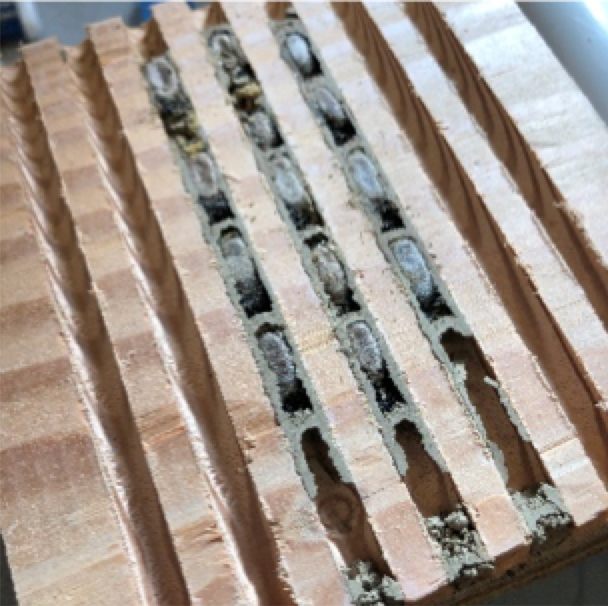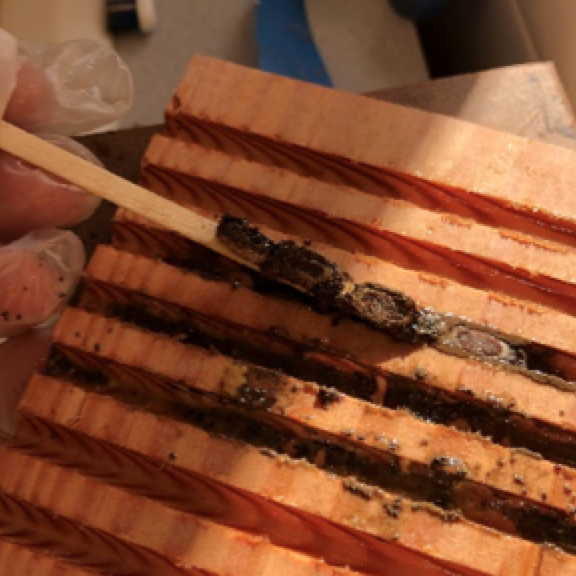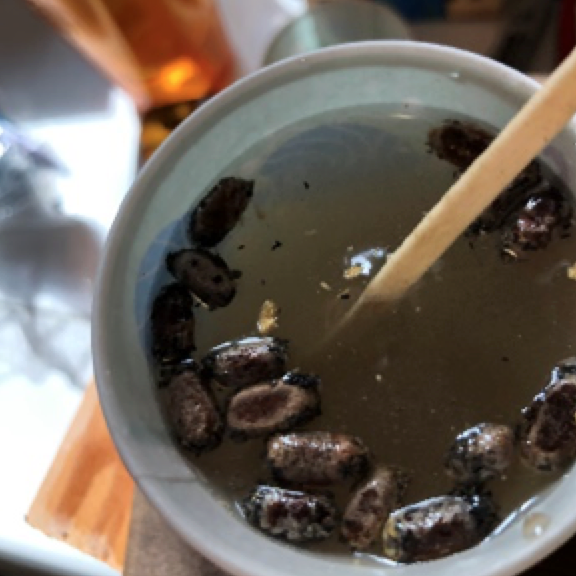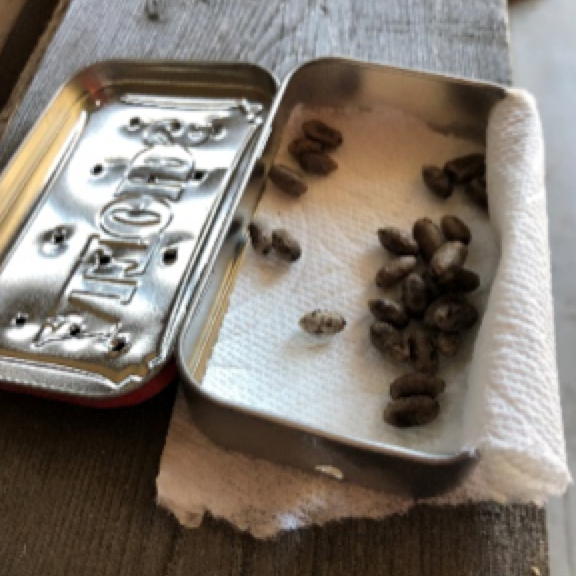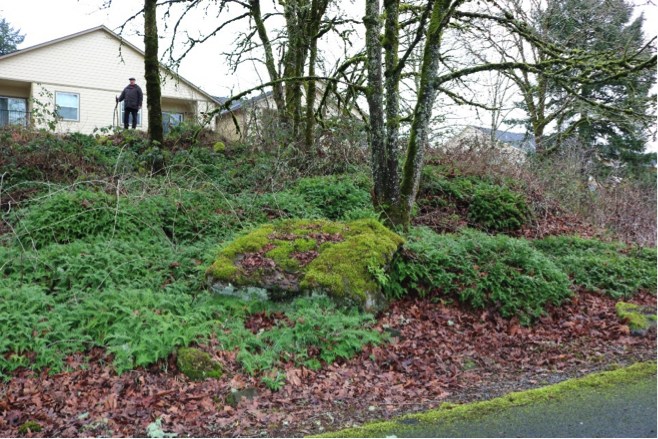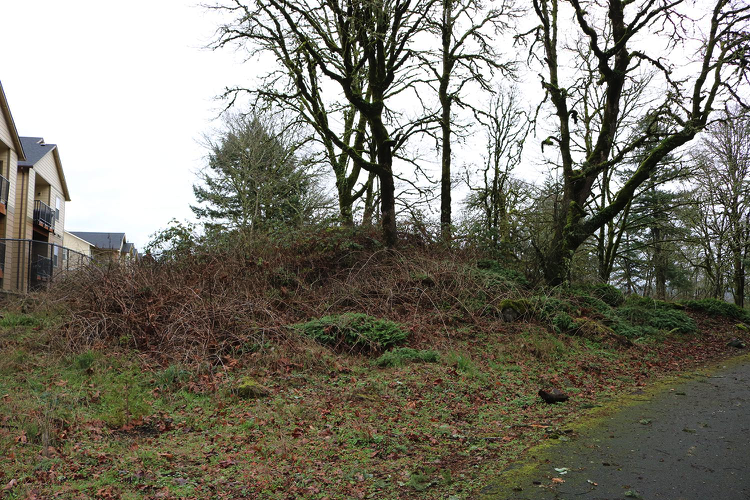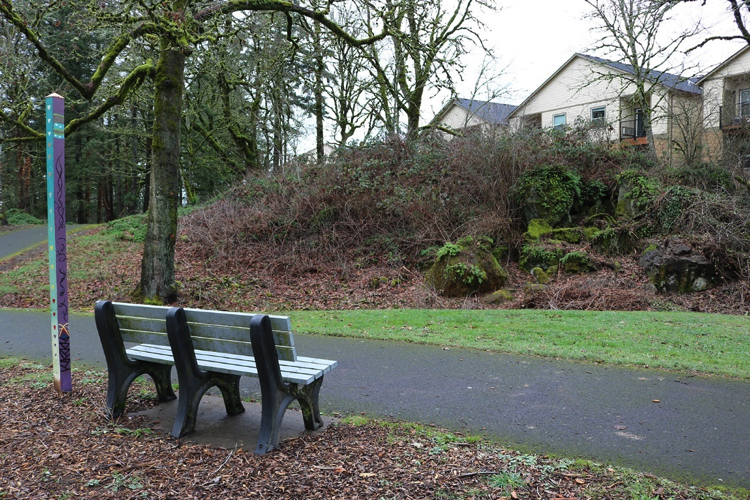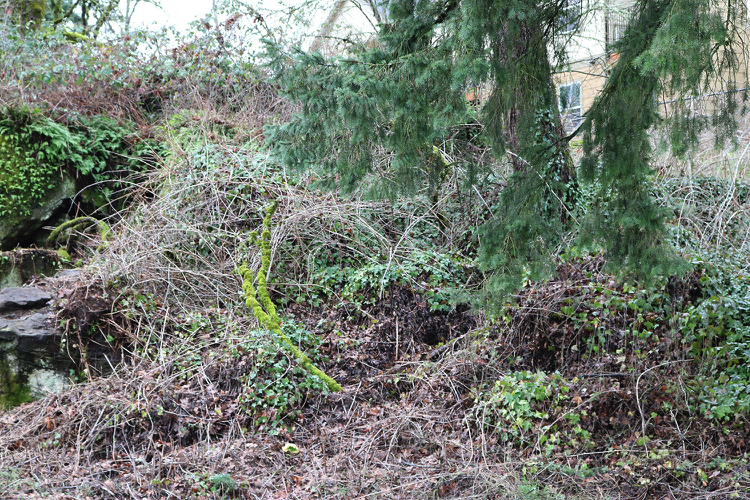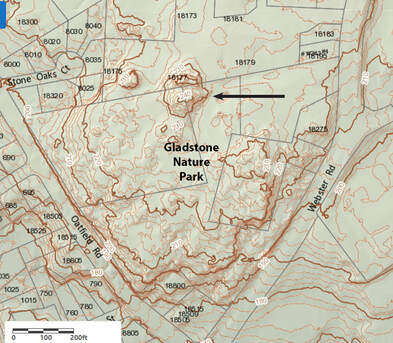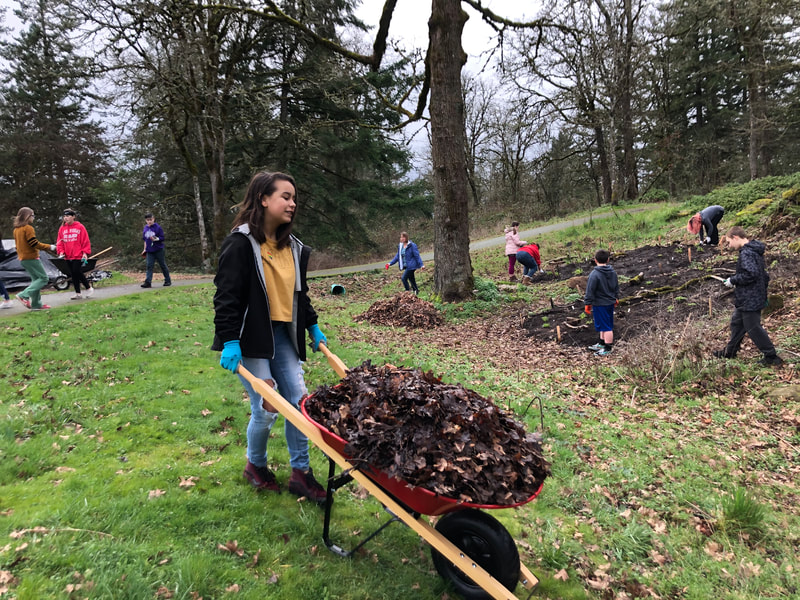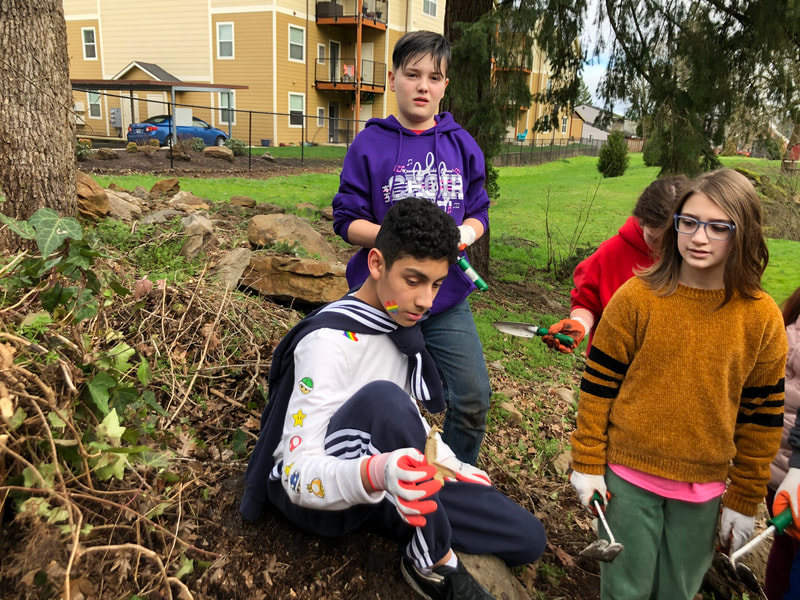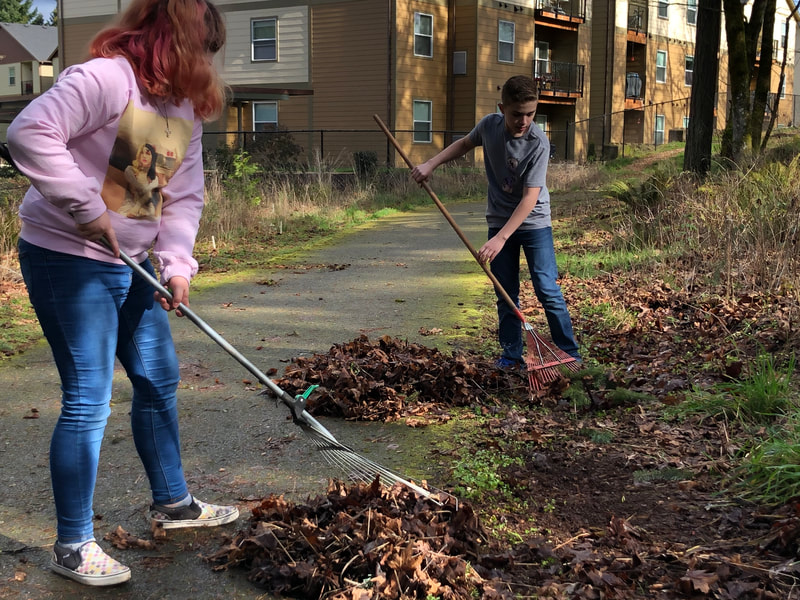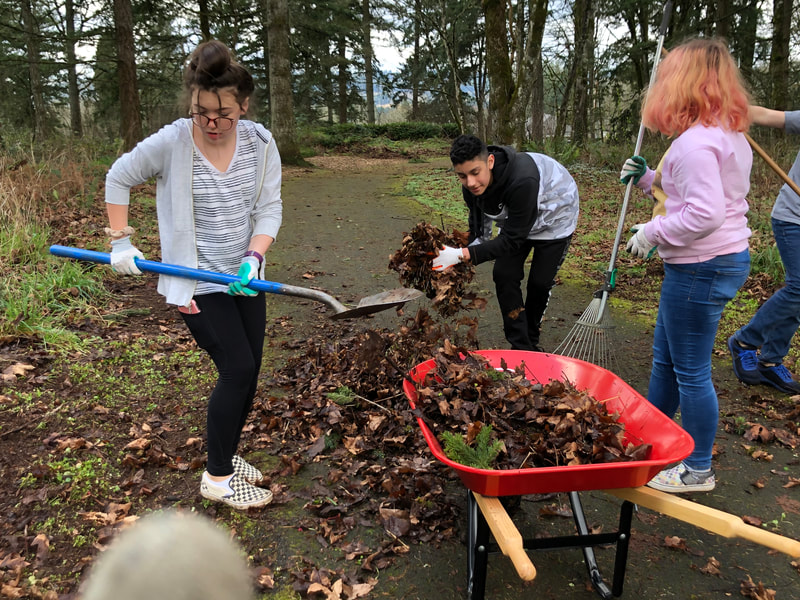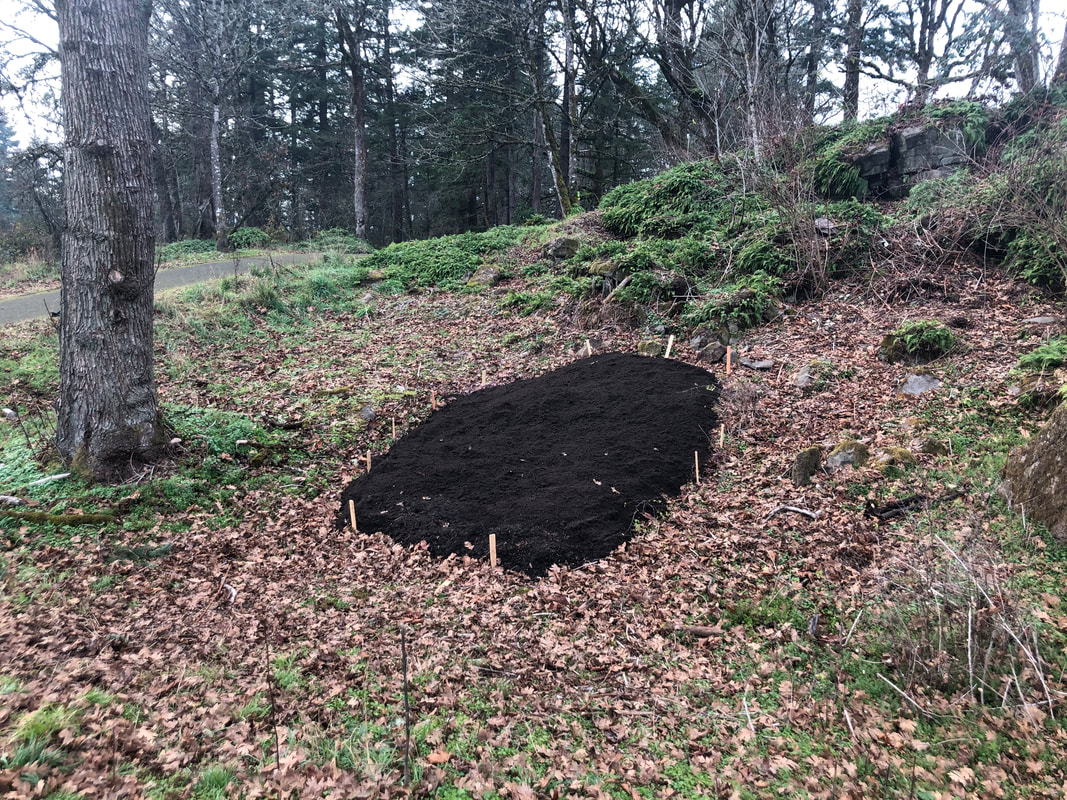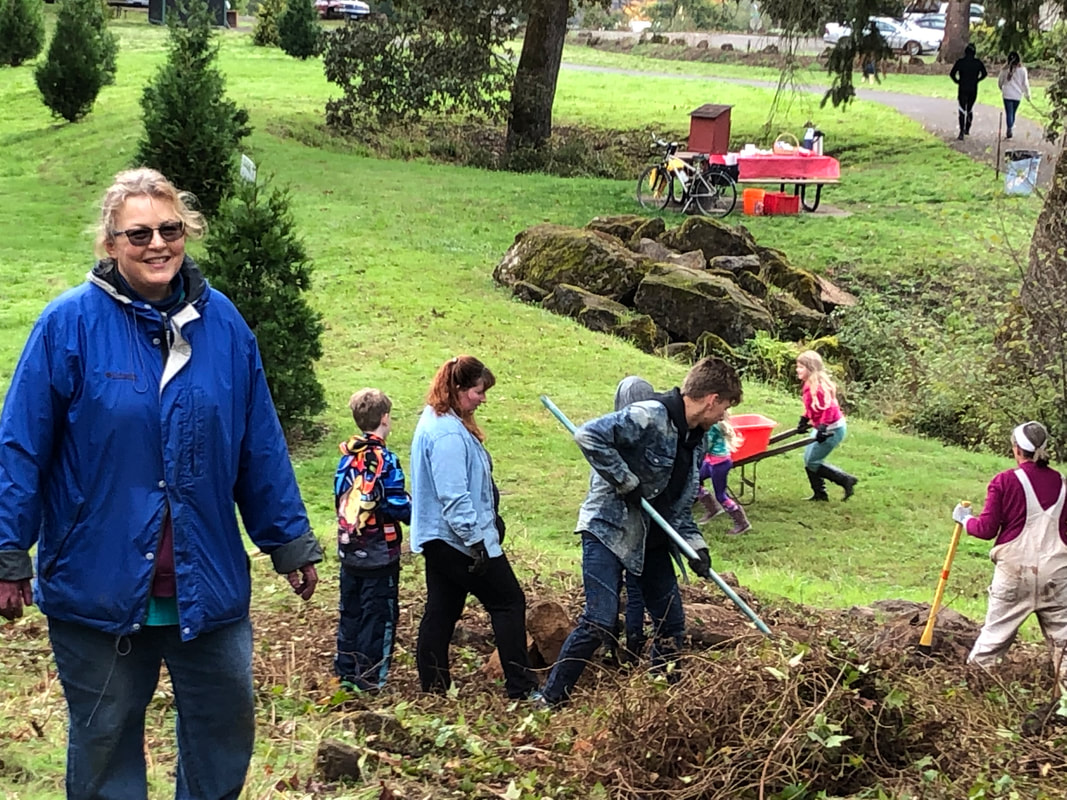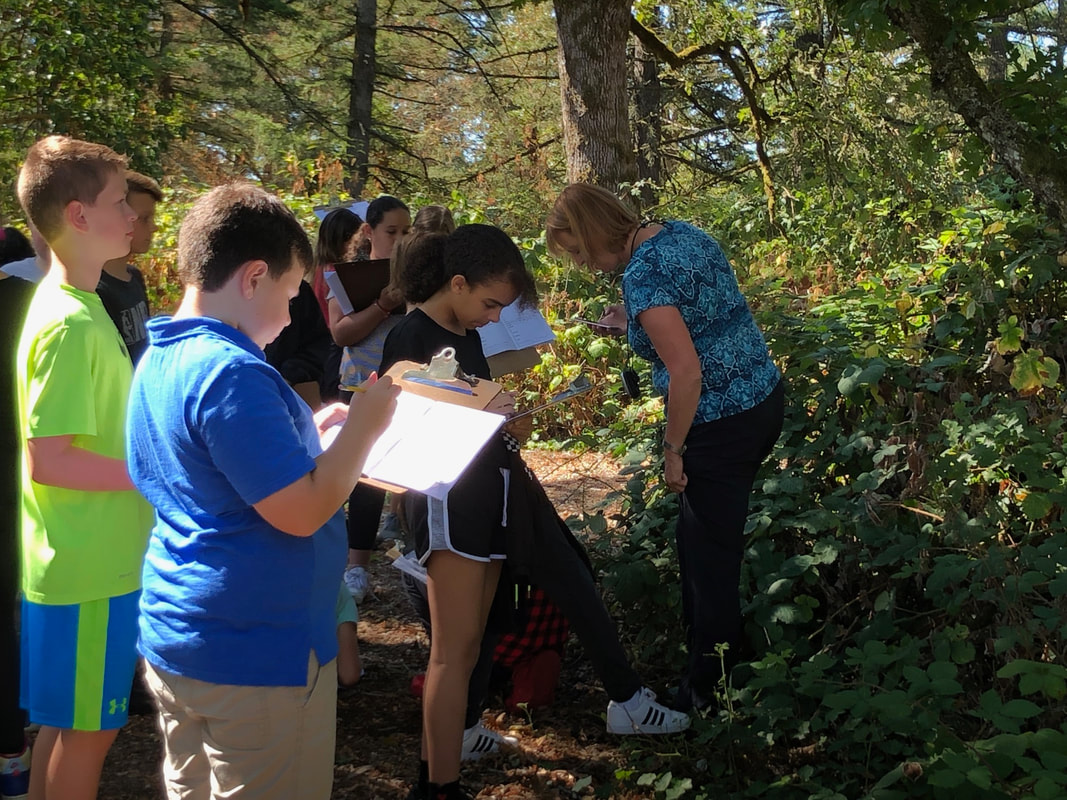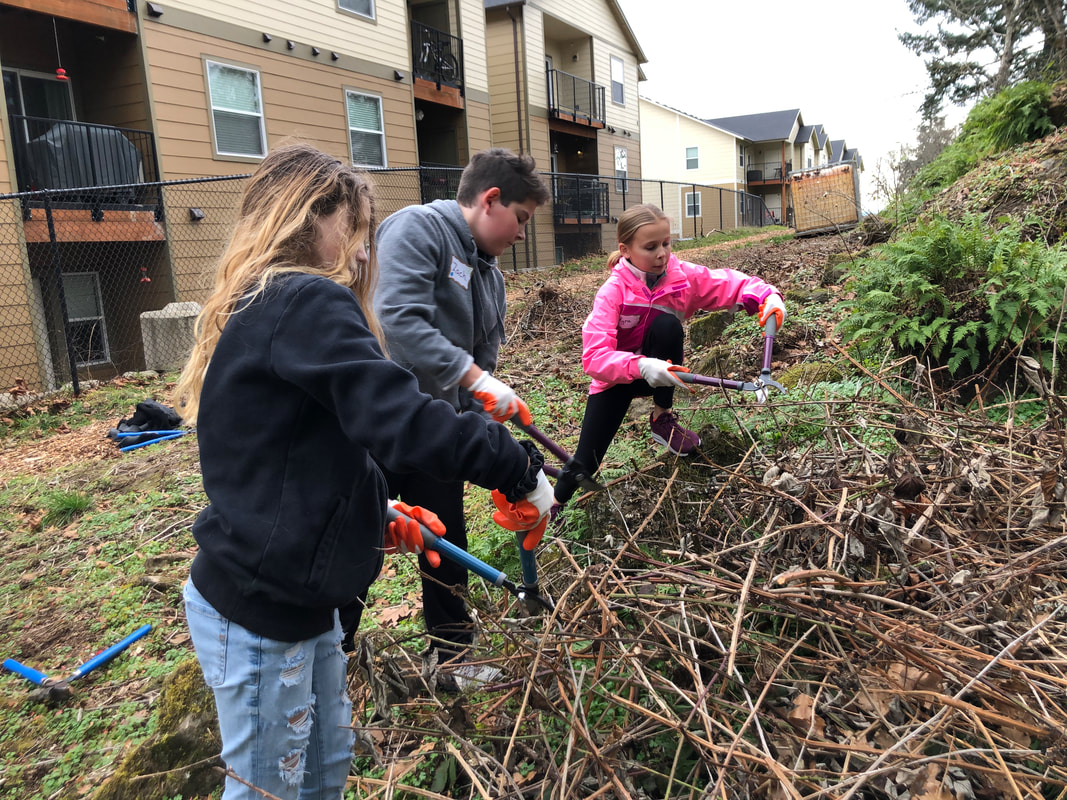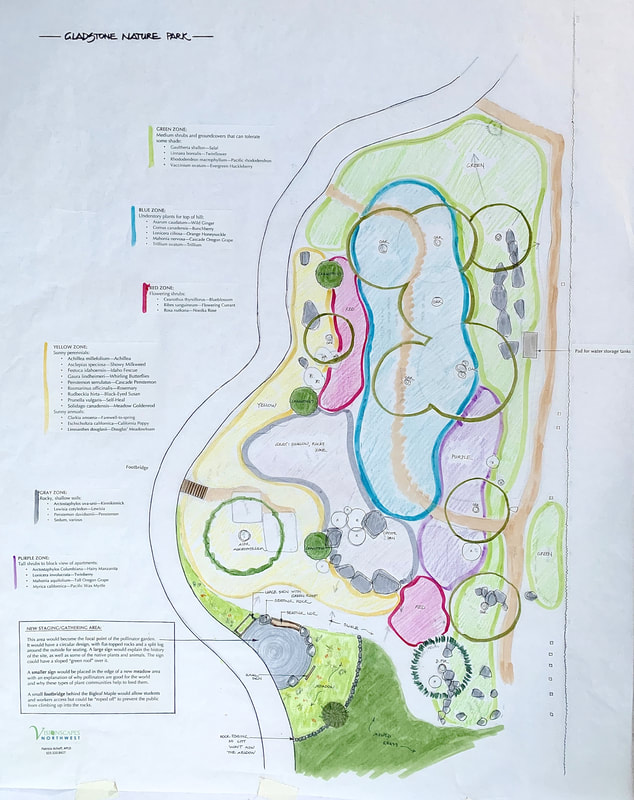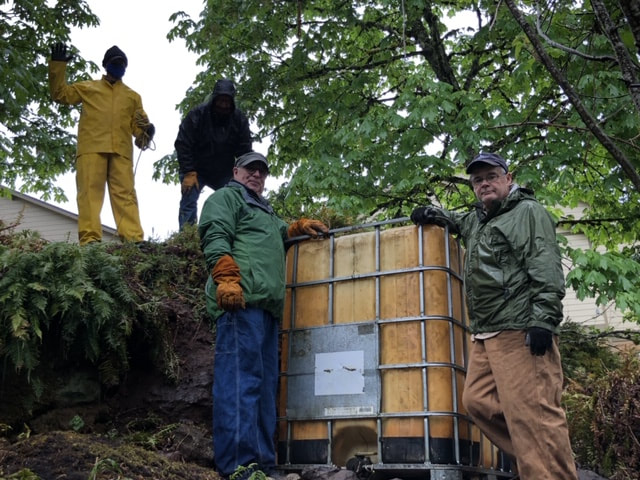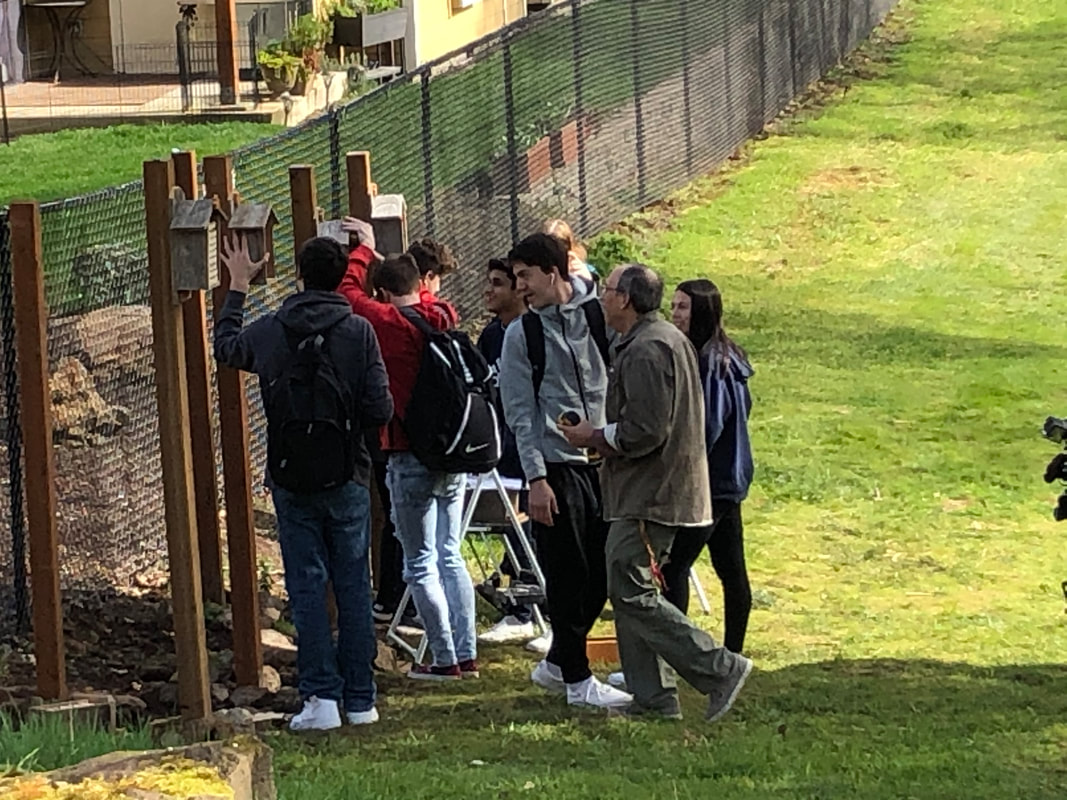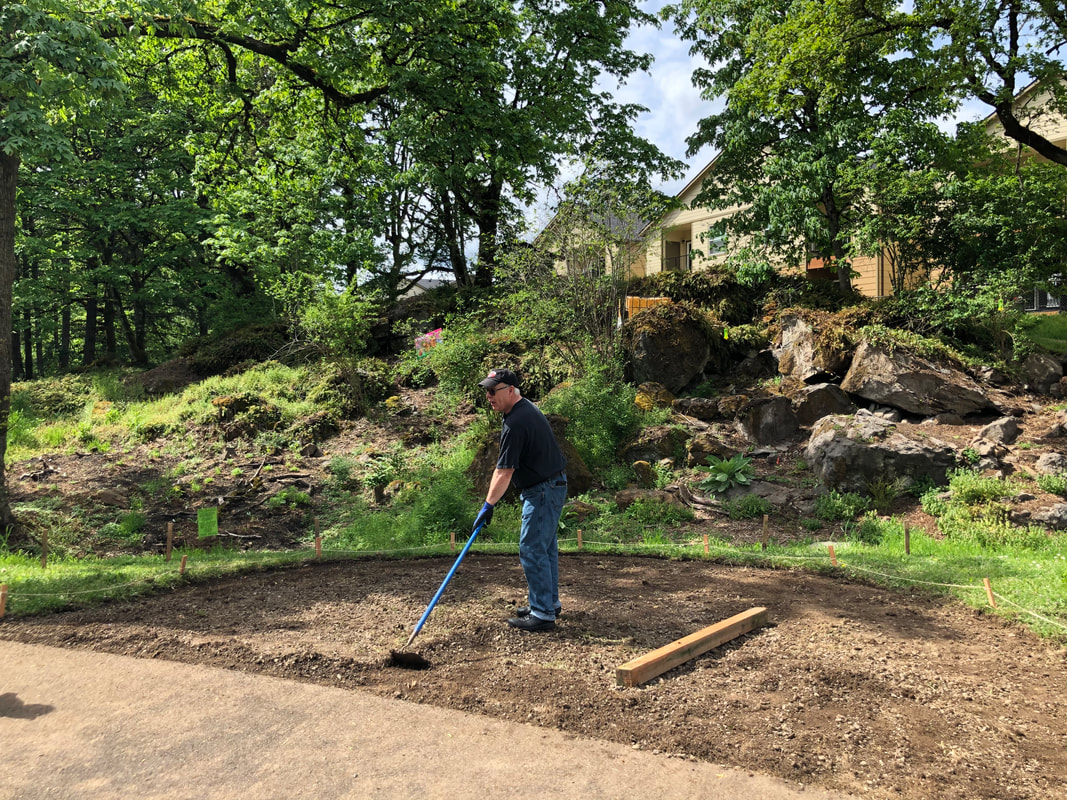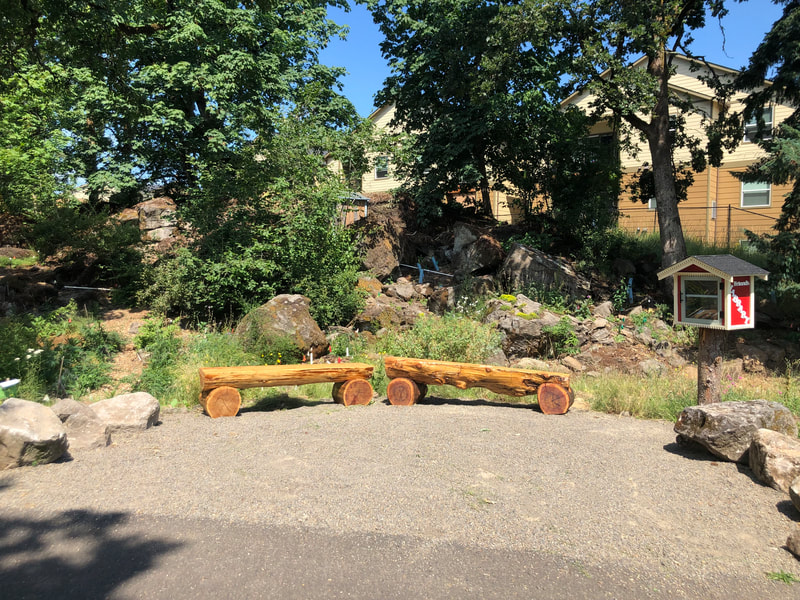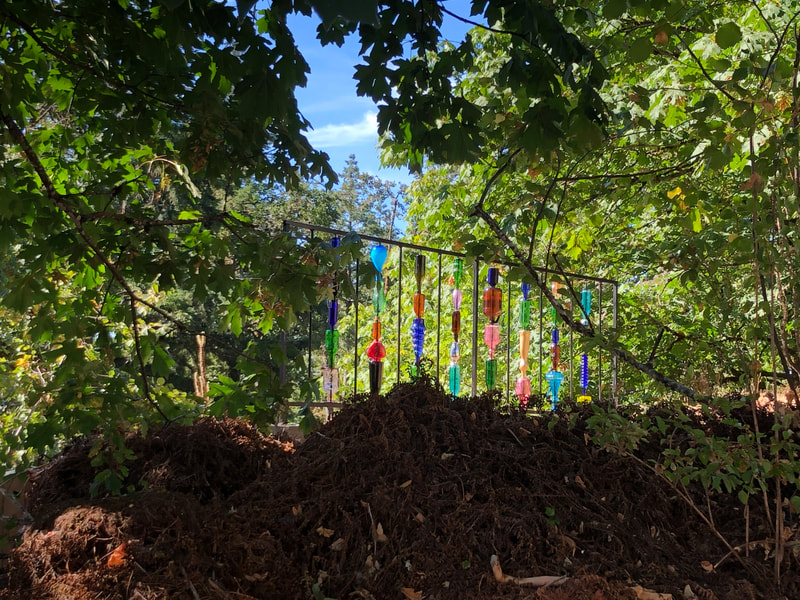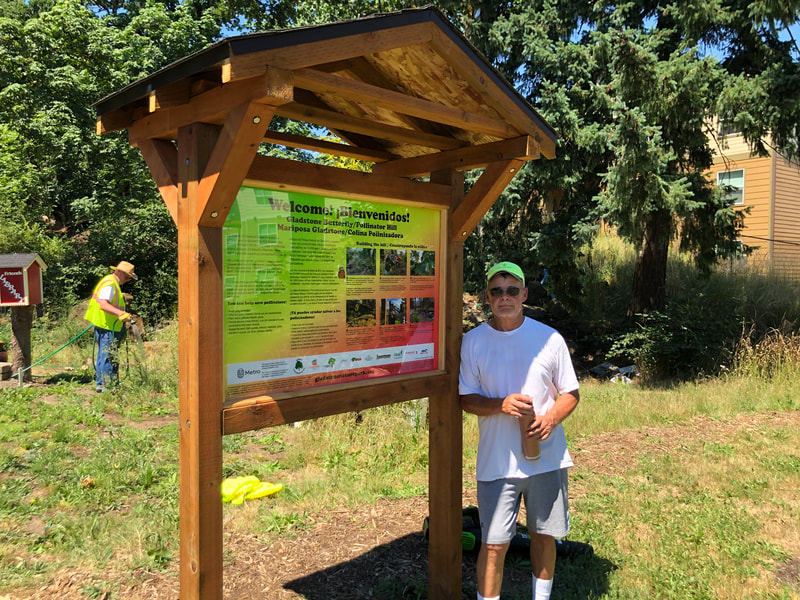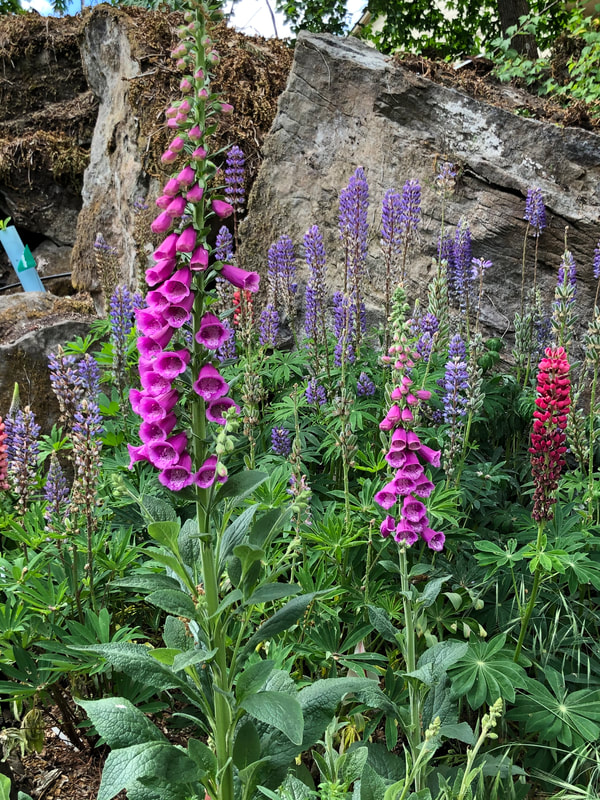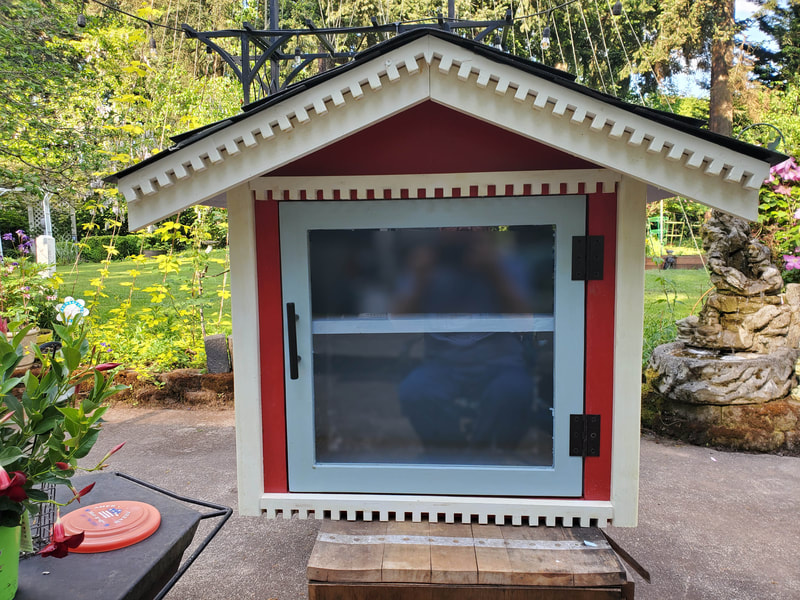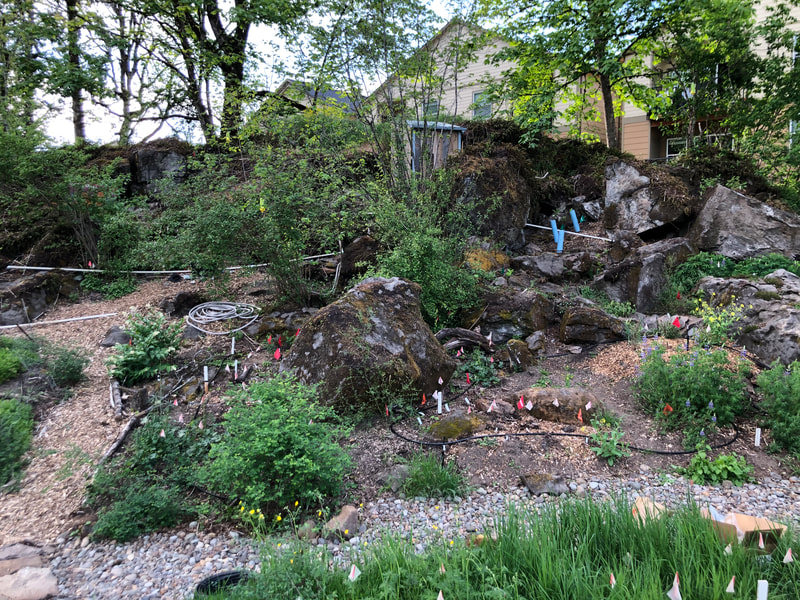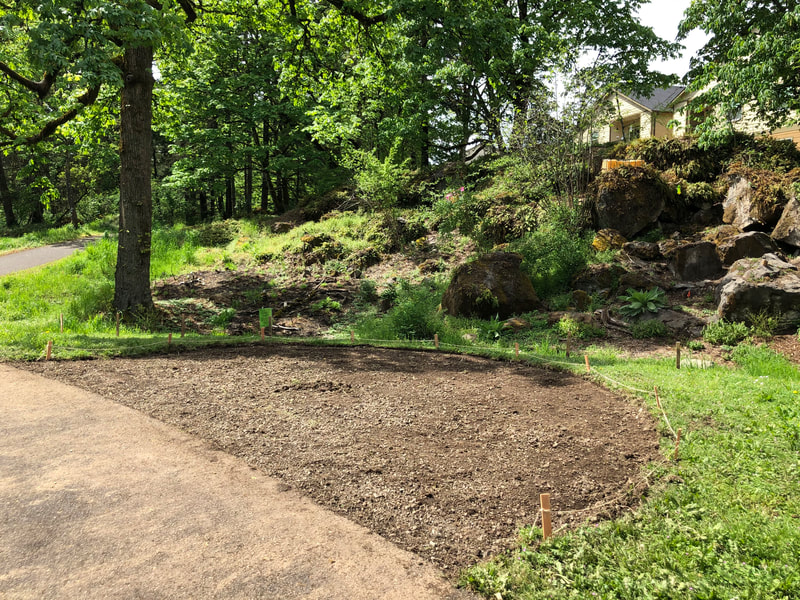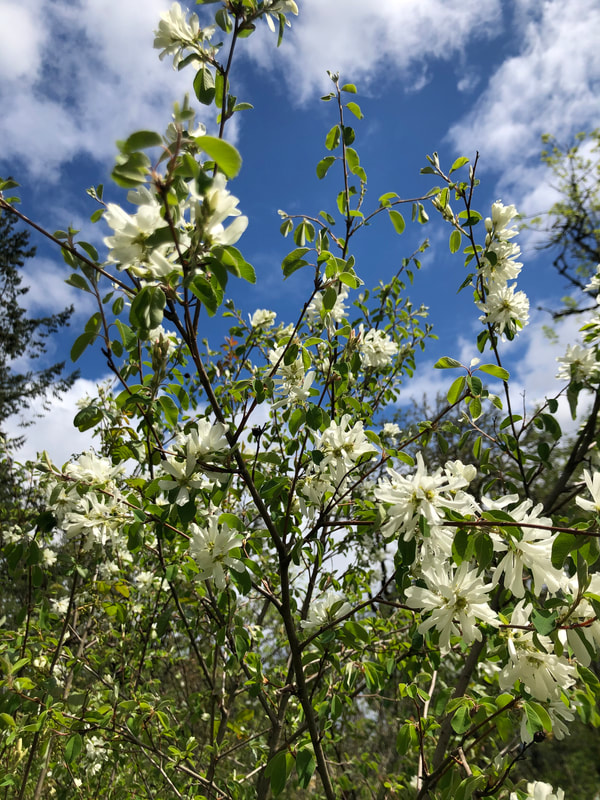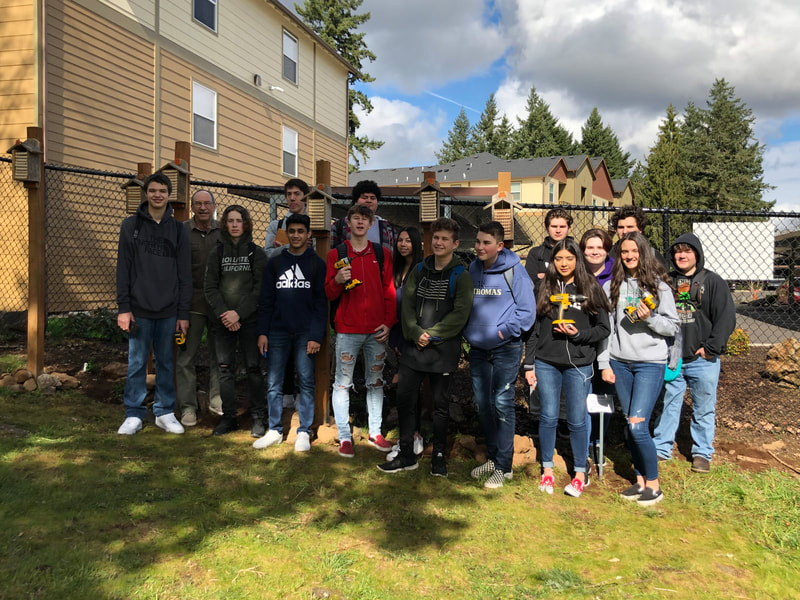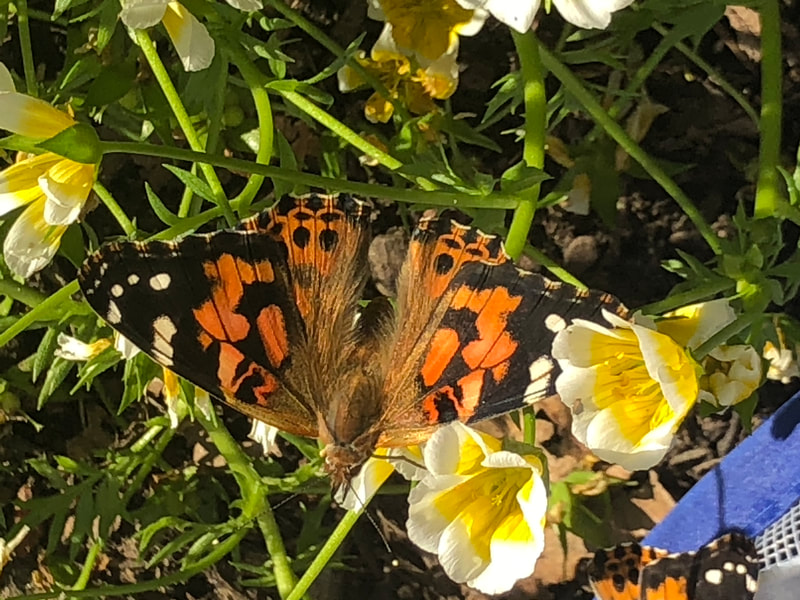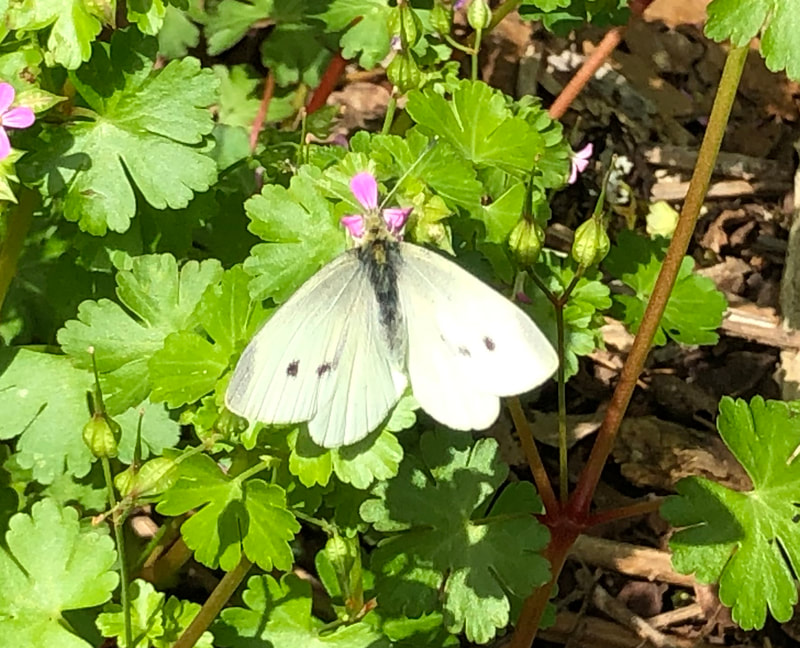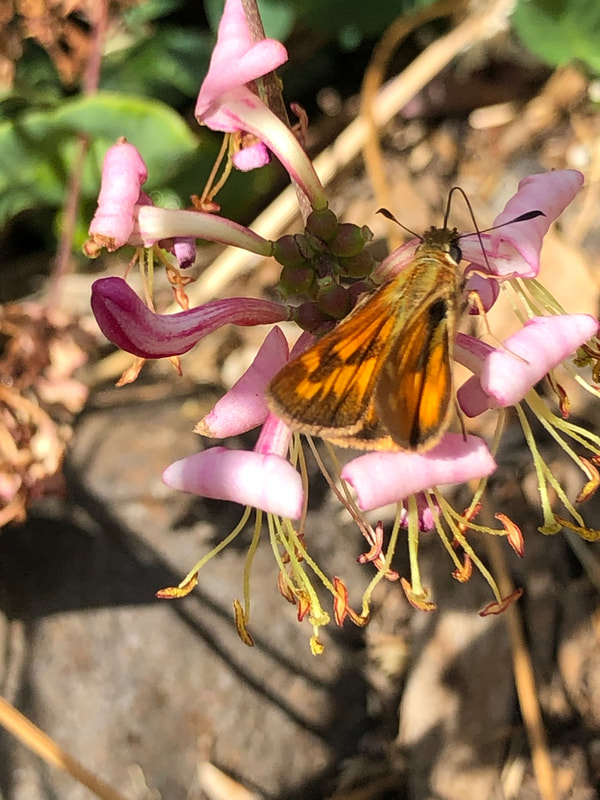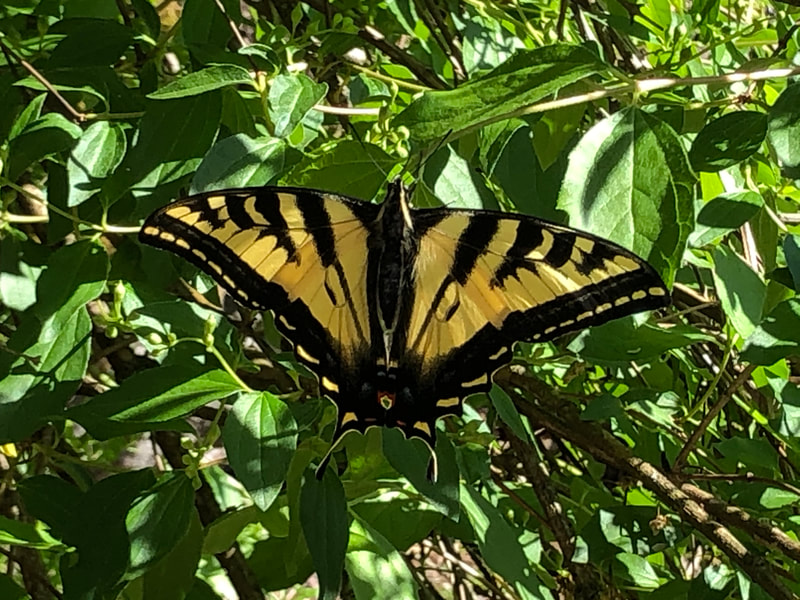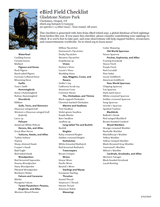BUTTERFLY/POLLINATOR HILL
|
|
BIRDS, BEES and BUTTERFLIES
The Butterfly/Pollinator Hill at Gladstone Nature Park is a FOGNAP project initiated in 2019. The plan was to rehabilitate a 25-foot tall, 10,000 square-foot hill near the meadow and the Metro trail using FOGNAP volunteers, school students, and community members, to restore it with native plants that will attract butterflies, pollinators, and birds. Our intention was to create a showcase for beautiful Willamette Valley butterflies, flowers, and native gardening practices that could be replicated throughout the community. |
Over the space of two years, dozens of work parties were held and thousands of volunteer hours were contributed. We cleared invasives, such as English ivy and Himalayan blackberries, and removed poison oak, dead plants, and trash revealing the large basalt boulders you see today. A pathway was constructed over the top giving workers access to all parts of the hill. Water tanks were installed to collect rainwater to irrigate the new plants as they got established. Planting areas were sheet-mulched with cardboard and layered with compost, steer and chicken manure and topsoil, creating planting beds between the rocks. By the second year, over 1,000 native plants were tucked in and a drip irrigation system installed. A viewing area was built next to the Metro trail that features new benches and seating rocks. It can be used for rest and contemplation or for small group presentations and discussions. A small free library was designed and built by volunteer Bill Preble and installed. The Gladstone City Library stepped up to add a StoryWalk® for young tots along the Metro path.
HERE COME THE POLLINATORS!
Four species of butterflies have arrived so far: Oregon’s beautiful yellow Swallowtail, the little white cabbage butterfly, orange painted ladies, and small caramel-colored skippers are enjoying the many new blooming plants. The mason bees are fun to watch when they hatch in the spring. Hummingbirds chirp in the maple trees overhead. And on any given day the hill is alive with hundreds of other kinds of bees and pollinators, bringing abundant life to a once-barren pile of rocks.
GRANTS ARE IMPORTANT MILESTONES FOR OUR PARK
Many thanks to Metro's 2019 Nature in Neighborhoods Restoration and Community Stewardship Grant program that supported our efforts to build out this feature in the Gladstone Nature Park. OnPoint Community Credit Union also awarded FOGNAP a Community Impact Grant to support K-12 students working on the hill. These are important partners in our efforts to continue this work for the park.
THANK YOU!
The Butterfly/Pollinator Hill project would not be possible without community support and FOGNAP's partners: Metro, City of Gladstone, Gladstone High School, Kraxberger Middle School, John Wetten Elementary School, OnPoint Community Credit Union, Exceed Enterprises, Bosky Dell Natives, McFarlane’s Bark, Portland Audubon, Emmert International, Bliss Roofing, Inc., Tapestry Hills Nursery. Special thanks to Bill Preble who designed and constructed the little library and the interpretive sign structure; artists Ali and Jim Miller for their lovely bottle banister; the Beyers family for the custom cedar benches; and all the individuals and groups who helped haul soil, bark chips, rocks, plants, tanks, water, cement, tools, and equipment. And many thanks to the dog walkers, citizens, and neighbors who visit the park every day and continue to encourage us in our work. This project is for you!
HERE COME THE POLLINATORS!
Four species of butterflies have arrived so far: Oregon’s beautiful yellow Swallowtail, the little white cabbage butterfly, orange painted ladies, and small caramel-colored skippers are enjoying the many new blooming plants. The mason bees are fun to watch when they hatch in the spring. Hummingbirds chirp in the maple trees overhead. And on any given day the hill is alive with hundreds of other kinds of bees and pollinators, bringing abundant life to a once-barren pile of rocks.
GRANTS ARE IMPORTANT MILESTONES FOR OUR PARK
Many thanks to Metro's 2019 Nature in Neighborhoods Restoration and Community Stewardship Grant program that supported our efforts to build out this feature in the Gladstone Nature Park. OnPoint Community Credit Union also awarded FOGNAP a Community Impact Grant to support K-12 students working on the hill. These are important partners in our efforts to continue this work for the park.
THANK YOU!
The Butterfly/Pollinator Hill project would not be possible without community support and FOGNAP's partners: Metro, City of Gladstone, Gladstone High School, Kraxberger Middle School, John Wetten Elementary School, OnPoint Community Credit Union, Exceed Enterprises, Bosky Dell Natives, McFarlane’s Bark, Portland Audubon, Emmert International, Bliss Roofing, Inc., Tapestry Hills Nursery. Special thanks to Bill Preble who designed and constructed the little library and the interpretive sign structure; artists Ali and Jim Miller for their lovely bottle banister; the Beyers family for the custom cedar benches; and all the individuals and groups who helped haul soil, bark chips, rocks, plants, tanks, water, cement, tools, and equipment. And many thanks to the dog walkers, citizens, and neighbors who visit the park every day and continue to encourage us in our work. This project is for you!
|
|
HOW TO CLEAN YOUR MASON BEE HOUSE
If you installed a mason bee house in your yard last year, winter is the time to clean it and collect the babies for spring. For houses with trays, follow these steps:
- Carefully remove each tray. You should see rows of cocoons encased in mud. Rinse with water to soften the mud.
- This will not hurt the cocoons.
- With a bamboo skewer or coffee stirring stick, carefully dislodge the cocoons from the wet mud and collect them in a paper cup.
- Rinse with water and stir to remove mud and debris. Inspect for mites or other insect invaders.
- Air dry the cocoons and store them in a cardboard or tin container with small holes punched in it. Make one of the holes 5/8 inch. This will be the exit for the new generation of mason bees. Store the bee boxes in a larger box in the crisper of your refrigerator until a warm day in the spring. Keep a moistened paper towel in the larger box to ensure humidity.
- Thoroughly scrub and clean your trays with water. Dry and store them in your garage or garden shed.
- In spring, place the container with the new cocoons in your mason bee house and grow your colony.
If your mason bee house has tubes, inspect them for damage and pests. Discard any that look suspicious and store the rest in your refrigerator until spring.
The Butterfly/Pollinator Hill in the Gladstone Nature Park has 10 mason bee houses thanks to the GHS shop classes. You can see them behind the Butterfly/Pollinator Hill near the fence. To keep your mason bees healthy, be sure to avoid pesticides in your yard.

